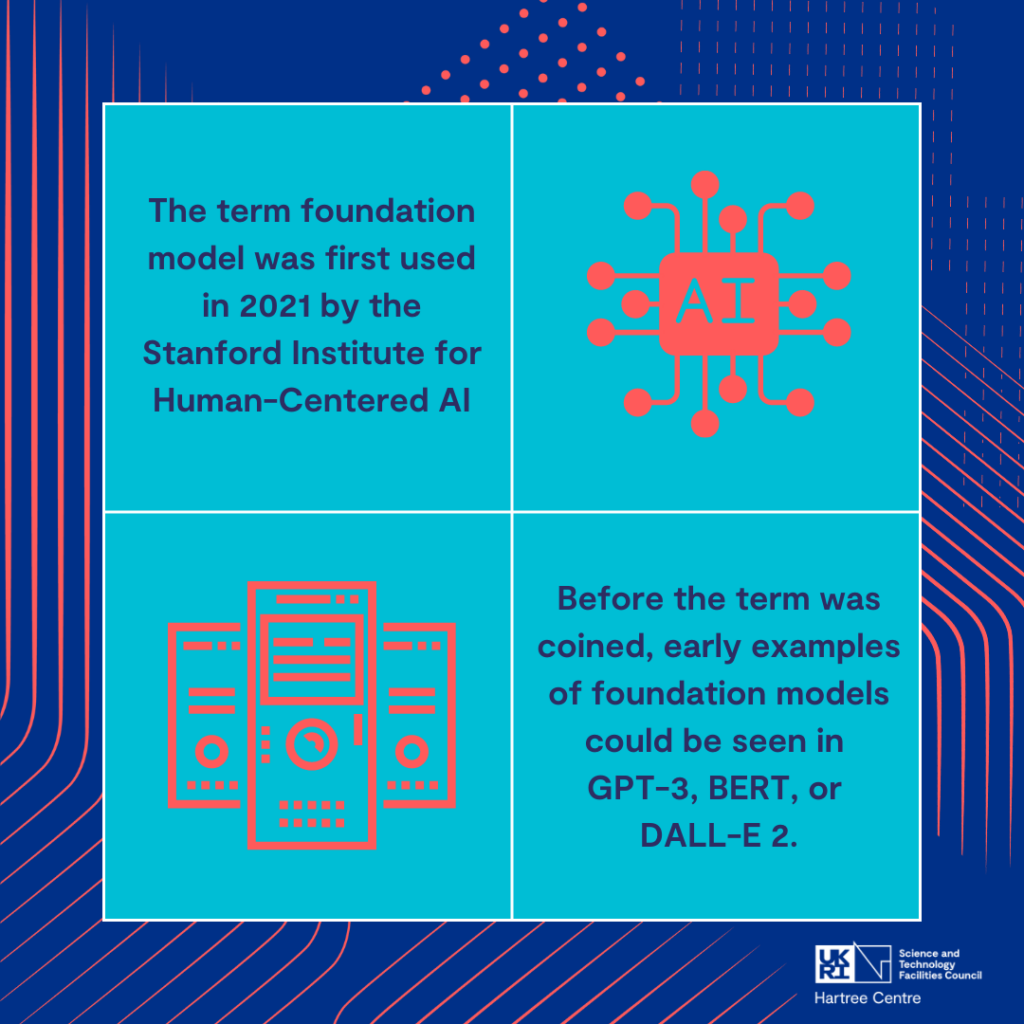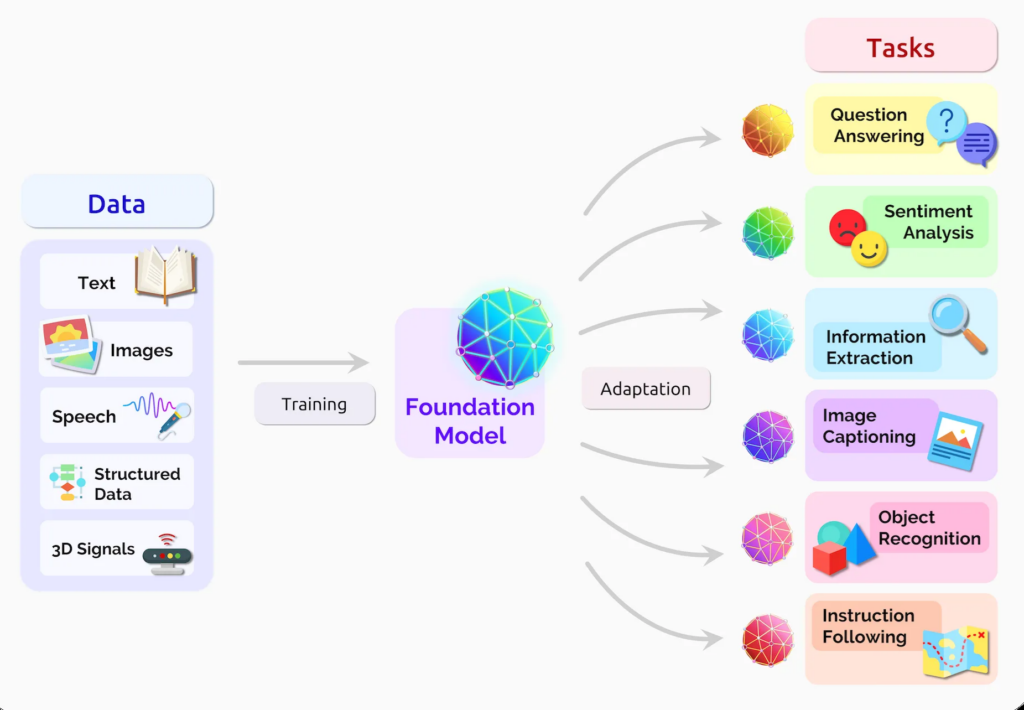What are AI Foundation models and why do they matter?
Over the last few months, there has been a lot of discussion in the media about artificial intelligence (AI) and foundation models. But what are foundation models and why should UK businesses be interested?

AI is used throughout our daily lives, most of the time without us realising it. First thing in the morning many of us open our smartphones with FaceID, or we might ask a digital voice assistant like Alexa or Siri to tell us what the weather will be like. Throughout the day we use search engines, spam filters or business forecasting and at night many of us use streaming services, following its recommendations. All these instances are using AI.
Commonly, an AI model needs its own ‘structured’ dataset specific to its task. Structured datasets are highly specific with each piece of data tagged and categorised in a defined format, whereas unstructured data is a collection of various data stored in their native formats uncategorised. As most data is ‘unstructured’ so unlabelled, a huge amount of effort is needed to create structured datasets to model and train, to then be able to recognise and categorise this unstructured data. Once trained the AI model could be applied to work on any challenge, like helping solicitors to redact sensitive and personal information, a project our AI team worked on with UK law firm Weightmans.

Traditionally, when a programme was designed it could only be used for its original purpose, but what if you could train one model that could be easily adapted? This is the premise foundation models are built on, by training a model on a broad set of unlabelled data, that would then only need a small subset of data to fine-tune it to complete a specific task. It is like learning to drive a campervan or a lorry when you already know how to drive a car, you need a lot less time to pick up the specialist skills needed. This quick adoption in AI foundation models uses techniques like self-supervised and transfer learning so the model can apply information that is learnt about one situation to another. Foundation models require huge amounts of raw data and considerable computing resources during training but once developed can be adapted and reused on a broad range of tasks.

The most well-known foundation models today are large language models (LLMs) such as Open AI’s GPT-4 and Google LaMDA. Jim Fan discusses how these models are also developing into multimodal LLM’s to use images for vision-language to generate responses. LLMs have attracted considerable attention for their ability to generate convincing text and engage in reasonable dialogues. Chatbots are a version of this application already in use in a wide range of industries, our centre has designed several chatbots including a virtual agent to support MedTech innovators navigating regulation around medical devices.
Foundation models have the potential to affect all aspects of business operations. Let’s just take the impact of Open AI’s ChatGPT on the retail sector, Bernard Marr’s recent article on LinkedIn shows that ChatGPT could provide retailers with the potential to improve customer engagement, reduce fraud, streamline operations and drive sales potentially enabling a competitive edge in a rapidly evolving marketplace.
The use of foundation models in AI has the potential to stimulate the UK economy by accelerating innovation and creating new businesses and jobs in the process. Recently the Hartree Centre started a project with Collaborative Conveyancing Limited to develop AI solutions to reduce the pressure and delays in the housing market.

All technology needs to be used responsibly, just because we can do something doesn’t necessarily mean that we should. AI can provide huge benefits but as with any new technology that has a wide range of applications, from summarising Jane Austen to suggesting potential treatment options to doctors, there are inherent risks associated with its use. It is imperative that we identify, mitigate, and address potential risks within our models. Adhering to a set of standards, guidance, and regulations that support both innovators and the public alike is an important first step. This is why the Department of Science Innovation and Technology (DSIT) recently released their ‘A pro-innovation approach to AI regulation’ white paper which sets out the UK approach. It will be fundamental that AI applications built off foundation models are well documented and well understood by all.
If you’re interested in finding out more about how AI could help your business, the Hartree Centre can help either by working with you on a project or through our online and face-to-face training. Our courses are free to join and cater for beginners to practitioners. So, if you want to understand how to embed AI in your business, please get in touch.
Join Newsletter
Provide your details to receive regular updates from the STFC Hartree Centre.
